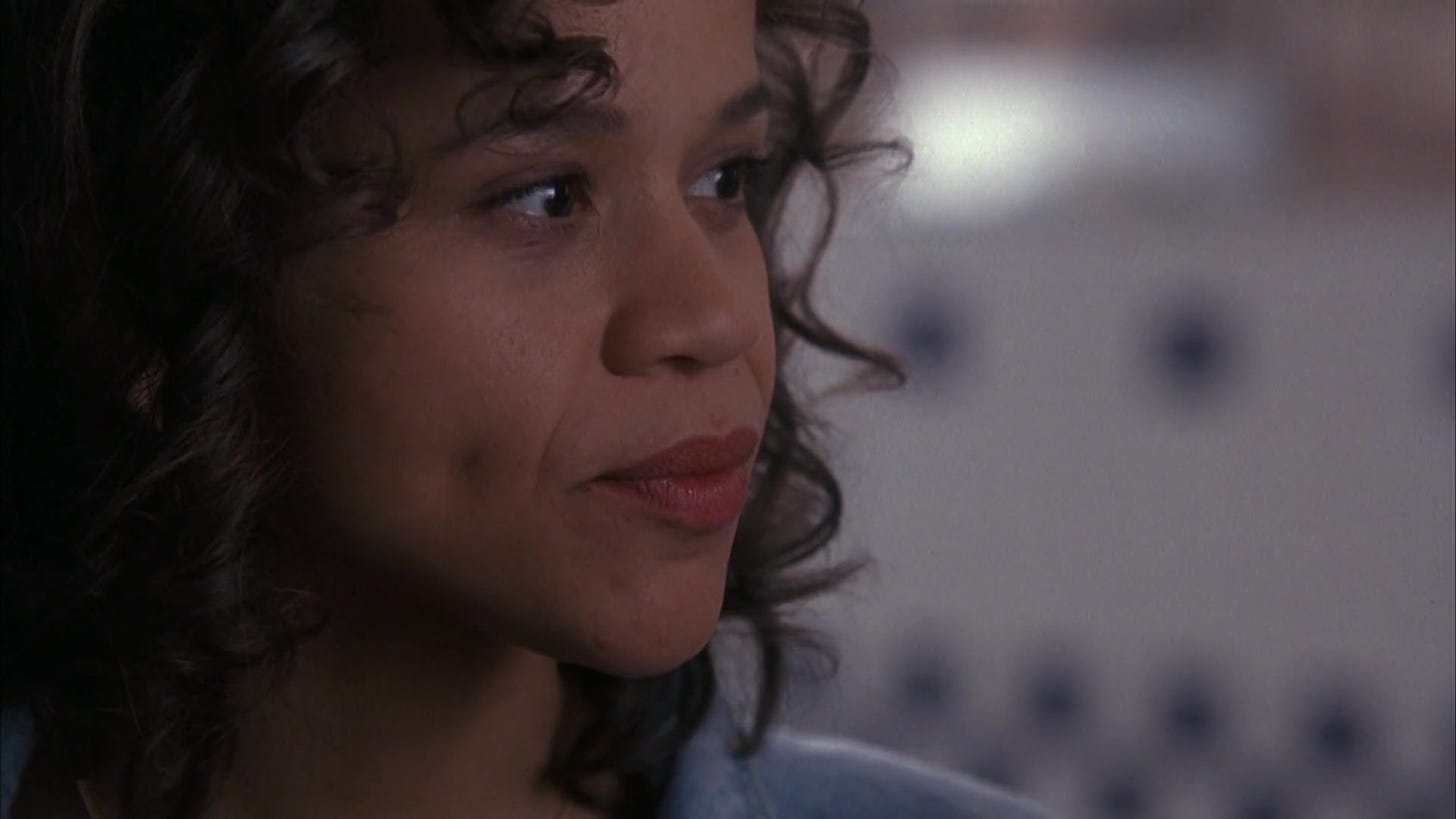The Nitehawk Theater (New York) was doing a retrospect on Rosie Perez, and I had the opportunity to watch Fearless, the 1993 film that should have won Perez an Oscar. I was expecting something very 90s and epic, the Hollywood blockbuster of yesteryear, but didn’t anticipate such an intimate picture.
—
To this day, I’m haunted by the opening scene of the Lost pilot, as the disoriented plane crash survivors try to make immediate sense of their surroundings. I didn’t know how much this opening ripped off from Fearless, which begins with a long horror-show of a sequence. Jeff Bridges has just survived a plane crash and wanders through the crash site in a strange state of blissful shock. He sees charred limbs and mothers crying out for their babies, but he barely has time to look or think about himself — a lucky survivor.
Director Peter Weir soon has us understand that Bridges doesn’t see his near death experience as something crippling or traumatic, but as an event that has suddenly freed him of fear. He adopts this eerie, placid cool, and when he returns to his wife (Isabelle Rossellini!) and son, we notice that he’s no longer content to live in their reality. Having conquered fear, he now has the ultimate savior complex and moves through the world with a delusional sense of self-assuredness and power.
The therapist assigned by the airline to aid the crash survivors (John Turturro) doesn’t know what to do with him. Nor does he know how to help another survivor, Rosie Perez, who — in a very different way than Bridges — has lost the will to live after her young son was killed upon impact. Her grief feels more relatable. She can’t get out of bed, and her husband and family are considering putting her in some sort of institution. The therapist, however, wonders if he should put his two lost patients together, in the hopes that they can reach each other in a way no one else has been able to. And here’s our movie.
—
Without getting too deep into the plot, Weir wisely flashes back, several times in fact, to the moments before the crash, as the plane is going down. Here we meet other characters, some survivors and others who aren’t so lucky. When Perez is unable to buckle in her son, a flight attendant tells her that she should hold him to her chest. Bridges tries to comfort his longtime friend before moving further up the plane to sit next to a minor traveling alone. Faced with imminent death, he’s surprised at how relaxed he feels. He’s far removed from the panicked faces he sees as he walks down the aisle.
Despite how real these moments feel — the production and sound design are remarkable — Fearless surprisingly gives one a sense of peace. As Bridges and Perez try to reckon with their actions, what they could or couldn’t have done, the film offers its audience a frank truth. There’s nothing anyone can do. Bridges tells Perez, a devout Catholic, that there’s no sense in trying to understand why some people live and others die. And perhaps when you don’t try, you can begin to accept whatever hand you’ve been dealt.
Their unique attachment between Bridges and Perez is one of the many strengths of the film. It’s not actually romantic, but it’s tender in a way that is incomprehensible to the people around them. Rossellini desperately tries to relate and connect to her husband, but is obviously unable to. As they drive through the streets of San Francisco, and in one of my favorite scenes, visit a shopping mall during Christmas time, we understand how they’ve come to see themselves in this world.
Perez walks by a mother holding her baby. She leans in and smells the baby’s head, but the mother doesn’t notice. She lingers too close and the mother still doesn’t know. As Bridges points out, they are ghosts, invisible to anyone who doesn’t have the same shared experience. For a while he’s okay with it, but Fearless isn’t about being stagnant. It asks what it will take to make them feel alive again.






this movie RULES.